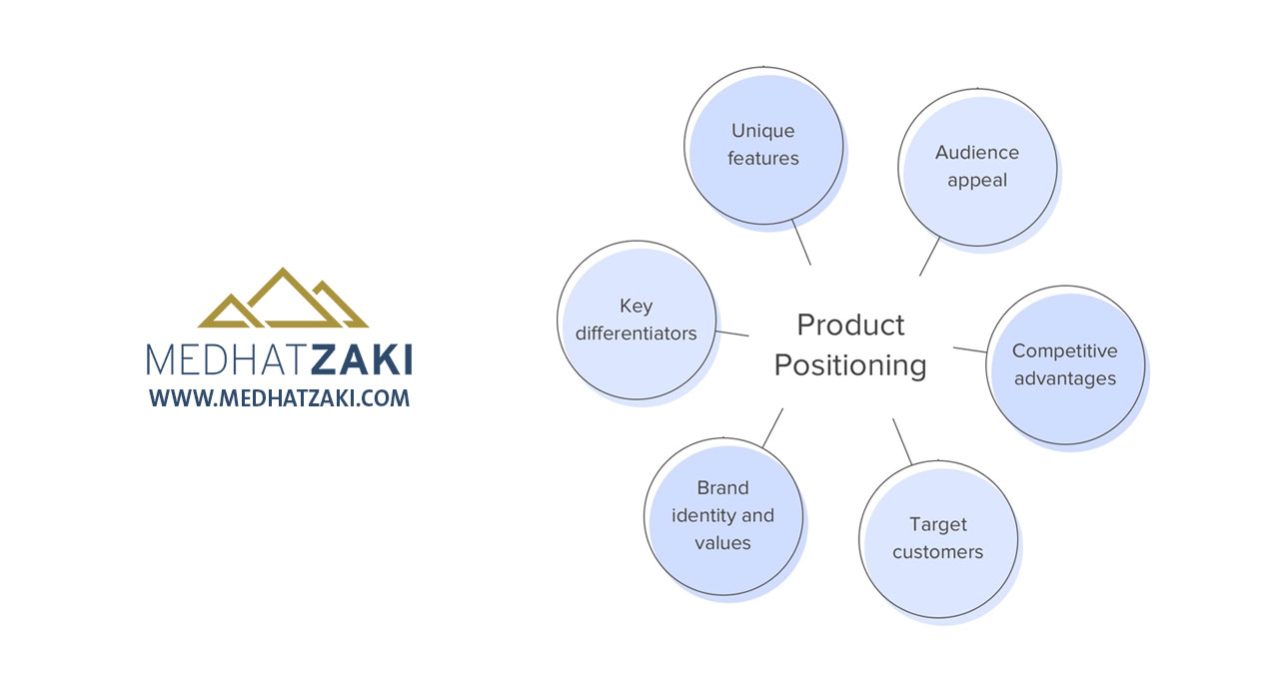Blog
Mastering Product Positioning: A Comprehensive Guide
- May 8, 2024
- Posted by: Admin From Medhat Zaki
- Category: Entrepreneurship Positioning

In today’s competitive market, getting your product noticed is half the battle won. But what’s the use if it’s not positioned right? Product positioning is the art of placing your product in the minds of consumers in a way that sets it apart from competitors. Whether you’re launching a new product or repositioning an existing one, mastering product positioning is key to driving sales and building a loyal customer base.
Understanding Product Positioning
Before diving into the strategies, let’s grasp the concept of product positioning. Product positioning entails defining how you want your target audience to perceive your product relative to competitors. It’s about creating a unique space in consumers’ minds, emphasizing your product’s distinctive features and benefits.
What Is Product Positioning?
The Ultimate Guide to Market Positioning

Importance of Product Positioning
Why is product positioning crucial? Well, imagine being in a crowded marketplace where every product looks the same. Product positioning helps your offering stand out amidst the noise. It guides your marketing efforts, resonates with your audience, and ultimately influences purchasing decisions.
Crafting Your Positioning Strategy
Now that we understand its significance, let’s delve into crafting a winning positioning strategy.
Identify Your Target Audience
Understanding your audience is fundamental to effective product positioning. Identify who your ideal customers are, what they need, and how your product fulfills those needs better than competitors. Conduct market research, analyze demographics, and create buyer personas to gain insights into your audience.
Analyze Competitors
To position your product effectively, you must know what you’re up against. Analyze your competitors’ strengths and weaknesses, their positioning strategies, and how they communicate with their audience. This analysis will help you identify gaps in the market that your product can fill.
Define Unique Selling Proposition (USP)
Your Unique Selling Proposition (USP) is what sets your product apart from the competition. It could be a unique feature, superior quality, or exceptional customer service. Define your USP clearly and incorporate it into your positioning strategy to make your product irresistible to consumers.
Choose the Right Positioning Strategy
There are various positioning strategies you can adopt based on your product and target market. Whether it’s value-based positioning, quality positioning, price positioning, or benefit positioning, choose a strategy that aligns with your product’s strengths and resonates with your audience.
Implementing Your Positioning Strategy
Crafting a strategy is just the first step; the real challenge lies in implementation.
Develop Compelling Messaging
Once you’ve defined your positioning strategy, it’s time to craft compelling messaging that communicates your product’s value proposition clearly and persuasively. Your messaging should resonate with your target audience and differentiate your product from competitors.
Leverage Visual Branding
Visual elements play a significant role in product positioning. From your logo and packaging design to your website and advertising materials, ensure that your visual branding aligns with your positioning strategy and reinforces your brand identity.
Communicate Consistently Across Channels
Consistency is key to effective product positioning. Ensure that your messaging is consistent across all marketing channels, including social media, email marketing, and advertising. Consistent communication reinforces your brand message and builds trust with consumers.
Monitor and Adapt
The market is dynamic, and consumer preferences evolve over time. Continuously monitor market trends, gather feedback from customers, and be prepared to adapt your positioning strategy accordingly. Flexibility and agility are essential traits of successful brands.
Conclusion
Mastering product positioning is a journey, not a destination. By understanding your audience, analyzing competitors, defining your USP, and implementing a well-crafted positioning strategy, you can elevate your product above the competition and capture the hearts and minds of consumers.
FAQs (Frequently Asked Questions)
What is product positioning, and why is it important?
Product positioning is the process of creating a distinct image and identity for your product in the minds of consumers. It’s important because it helps your product stand out in a crowded marketplace and influences purchasing decisions.
How do I identify my target audience?
Identifying your target audience involves conducting market research, analyzing demographics, and creating buyer personas to understand the needs and preferences of your ideal customers.
What is a Unique Selling Proposition (USP), and why do I need one?
A Unique Selling Proposition (USP) is what sets your product apart from competitors and makes it unique in the eyes of consumers. Having a clear USP is essential for effective product positioning as it helps differentiate your product and attract customers.


